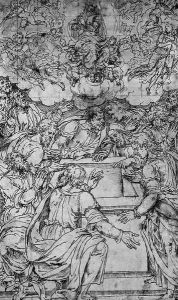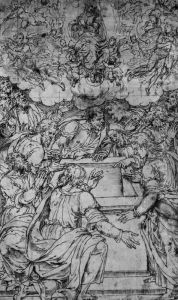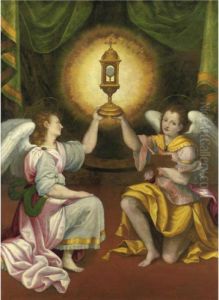Andrea Mainardi, Il Chiaveghino Paintings
Andrea Mainardi, also known as Il Chiaveghino, was an Italian painter of the late Renaissance period, born in 1580 in Cremona, Italy. His nickname, 'Il Chiaveghino,' likely derives from the name of his father, Chiaveghino, who was also an artist, although not much is documented about him. Andrea Mainardi's life and works are not as extensively chronicled as those of some of his contemporaries, making certain aspects of his biography and artistic contributions somewhat obscure.
Mainardi is primarily known for his religious paintings, which were influenced by the Mannerist style that was prevalent in Italy during the late 16th and early 17th centuries. This style is characterized by elongated figures, unusual complexities in composition, and a tendency toward artificiality or stylization as opposed to the naturalistic tendencies that would come to the fore with the Baroque movement later on.
Mainardi's works were particularly influenced by the Cremonese school of painting, and he may have been a pupil or follower of the more renowned Cremonese painter, Camillo Boccaccino. Mainardi's paintings often contained vivid colors and demonstrated a command of chiaroscuro—the contrast between light and dark—to create dramatic effects. His religious works were meant to inspire piety and devotion in their viewers, which was a primary function of art within the Counter-Reformation context of the time.
Little is known about Mainardi's patrons or the specific commissions he undertook. However, it is likely that he worked for local churches and religious confraternities, as was typical for artists of his time and region. His art would have been an integral part of the religious and civic life of Cremona, contributing to the visual culture that sought to educate and move the local populace.
Andrea Mainardi, Il Chiaveghino died in 1630. Although he is not as well-remembered as some of his contemporaries, his paintings still reflect the skill and stylistic nuances of the late Renaissance period in Italy. His works can be appreciated for their contribution to the religious and artistic heritage of his native Cremona.


